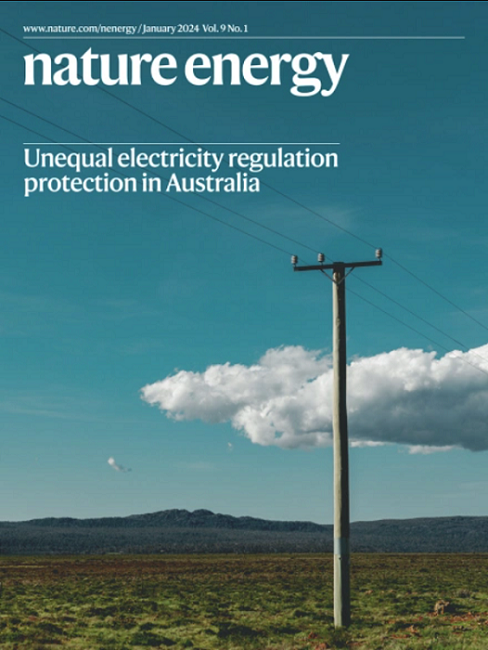动态扩展充电过程中的电化学稳定窗口
IF 60.1
1区 材料科学
Q1 ENERGY & FUELS
引用次数: 0
摘要
自适应电解质已经被开发出来,它在充电过程中利用盐浓度诱导的相分离在空间上富集相对电极上的抗还原和抗氧化溶剂。这种动态分离扩展了电化学稳定性窗口,使锌金属电池和锂金属电池的稳定运行超越了传统水和非水电解质的限制。本文章由计算机程序翻译,如有差异,请以英文原文为准。


Dynamically expanding the electrochemical stability window during charging
Self-adaptive electrolytes have been developed that harness salt concentration-induced phase separation during charging to spatially enrich reduction- and oxidation-resistant solvents at opposite electrodes. This dynamic segregation expands the electrochemical stability window, enabling stable operation of zinc-metal and lithium-metal batteries beyond the limits of conventional aqueous and non-aqueous electrolytes.
求助全文
通过发布文献求助,成功后即可免费获取论文全文。
去求助
来源期刊

Nature Energy
Energy-Energy Engineering and Power Technology
CiteScore
75.10
自引率
1.10%
发文量
193
期刊介绍:
Nature Energy is a monthly, online-only journal committed to showcasing the most impactful research on energy, covering everything from its generation and distribution to the societal implications of energy technologies and policies.
With a focus on exploring all facets of the ongoing energy discourse, Nature Energy delves into topics such as energy generation, storage, distribution, management, and the societal impacts of energy technologies and policies. Emphasizing studies that push the boundaries of knowledge and contribute to the development of next-generation solutions, the journal serves as a platform for the exchange of ideas among stakeholders at the forefront of the energy sector.
Maintaining the hallmark standards of the Nature brand, Nature Energy boasts a dedicated team of professional editors, a rigorous peer-review process, meticulous copy-editing and production, rapid publication times, and editorial independence.
In addition to original research articles, Nature Energy also publishes a range of content types, including Comments, Perspectives, Reviews, News & Views, Features, and Correspondence, covering a diverse array of disciplines relevant to the field of energy.
 求助内容:
求助内容: 应助结果提醒方式:
应助结果提醒方式:


